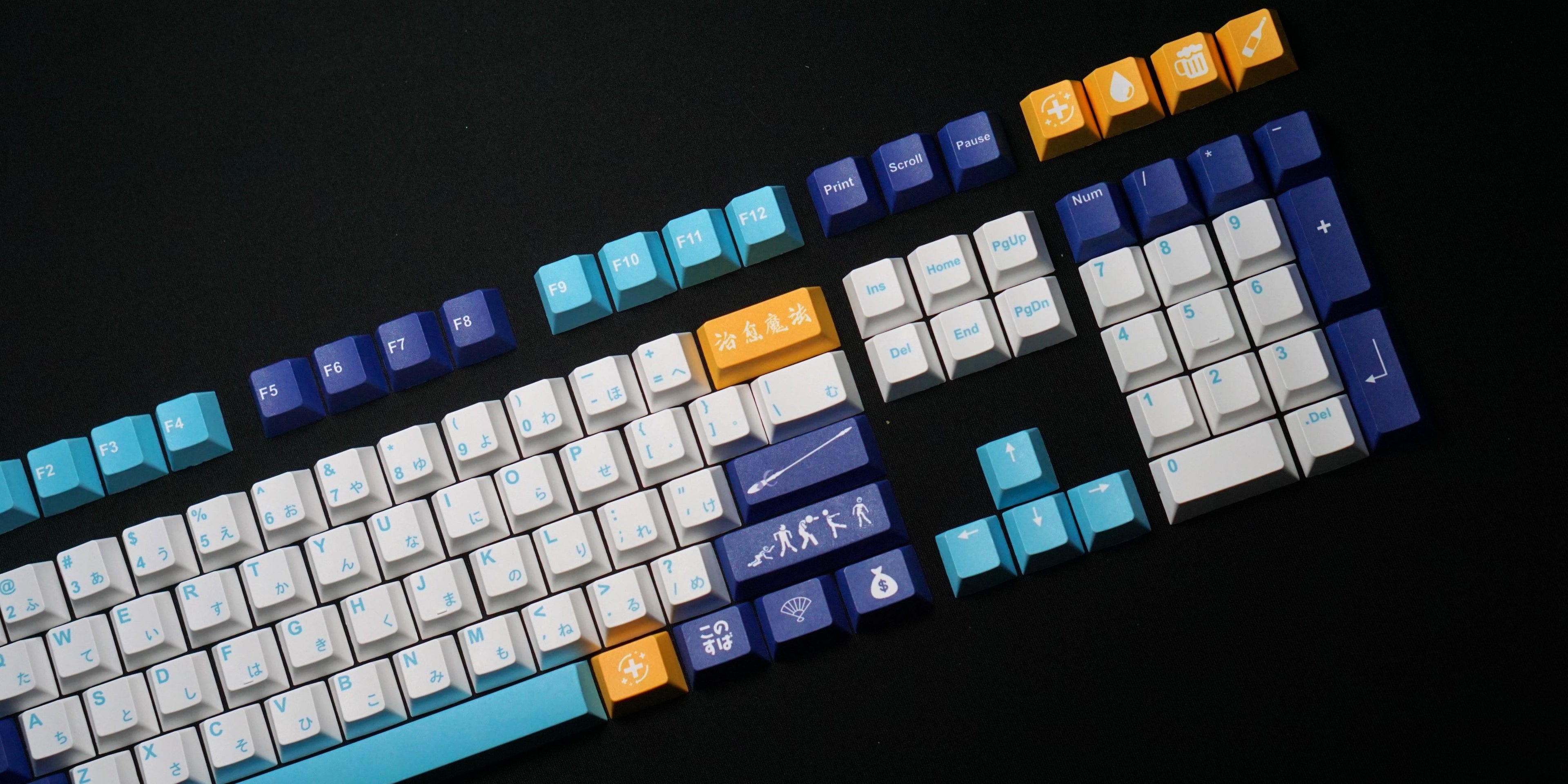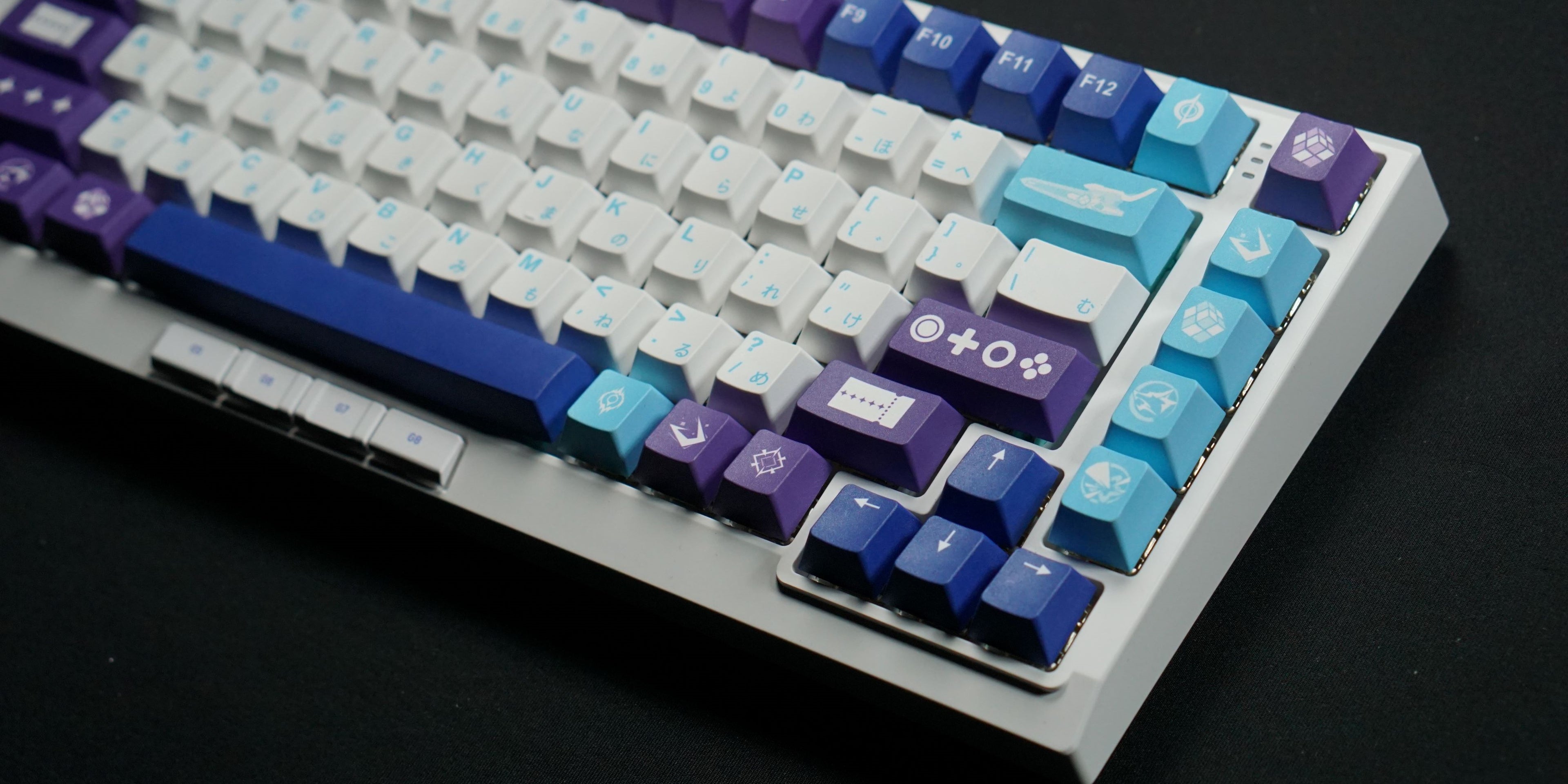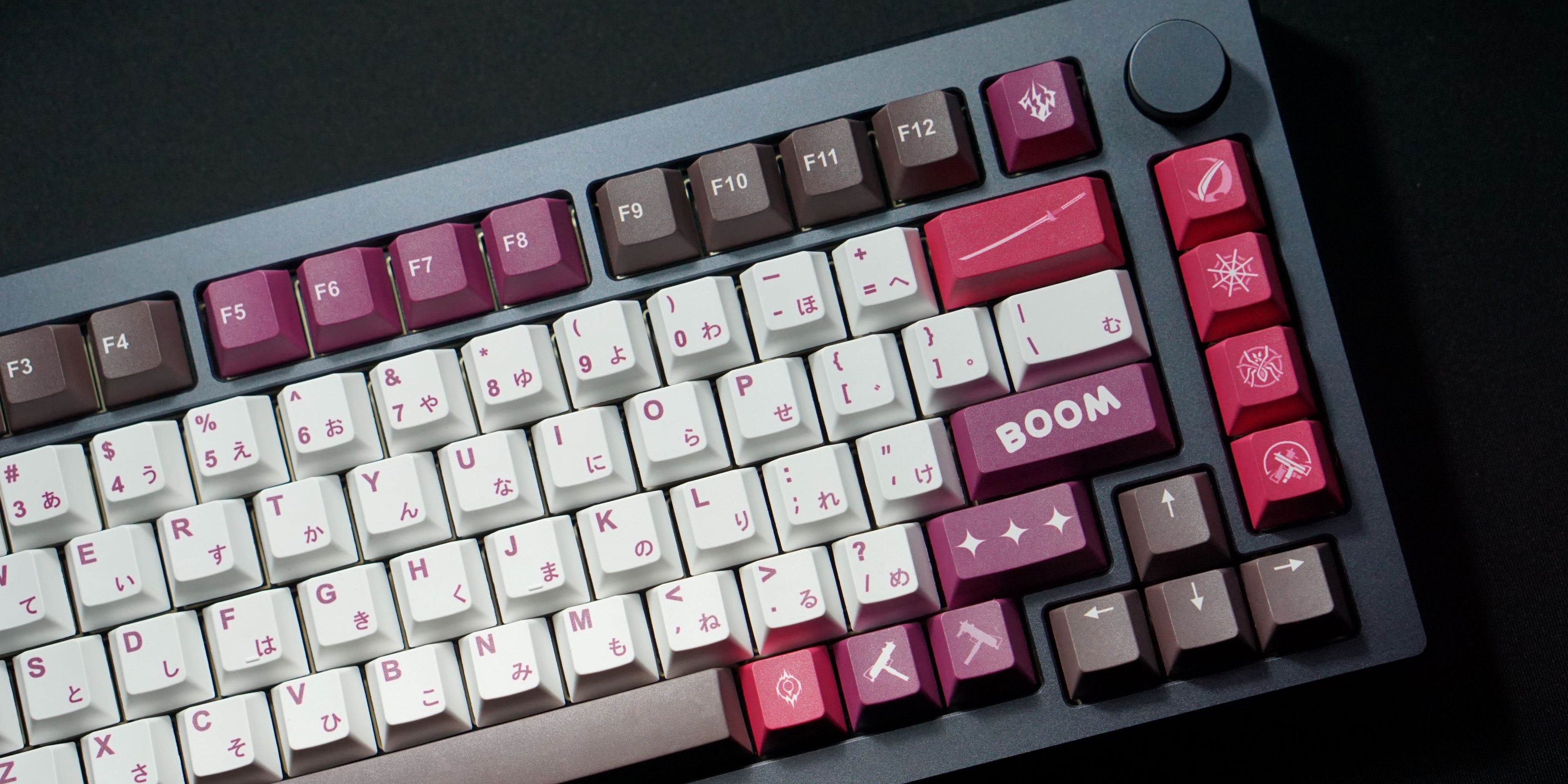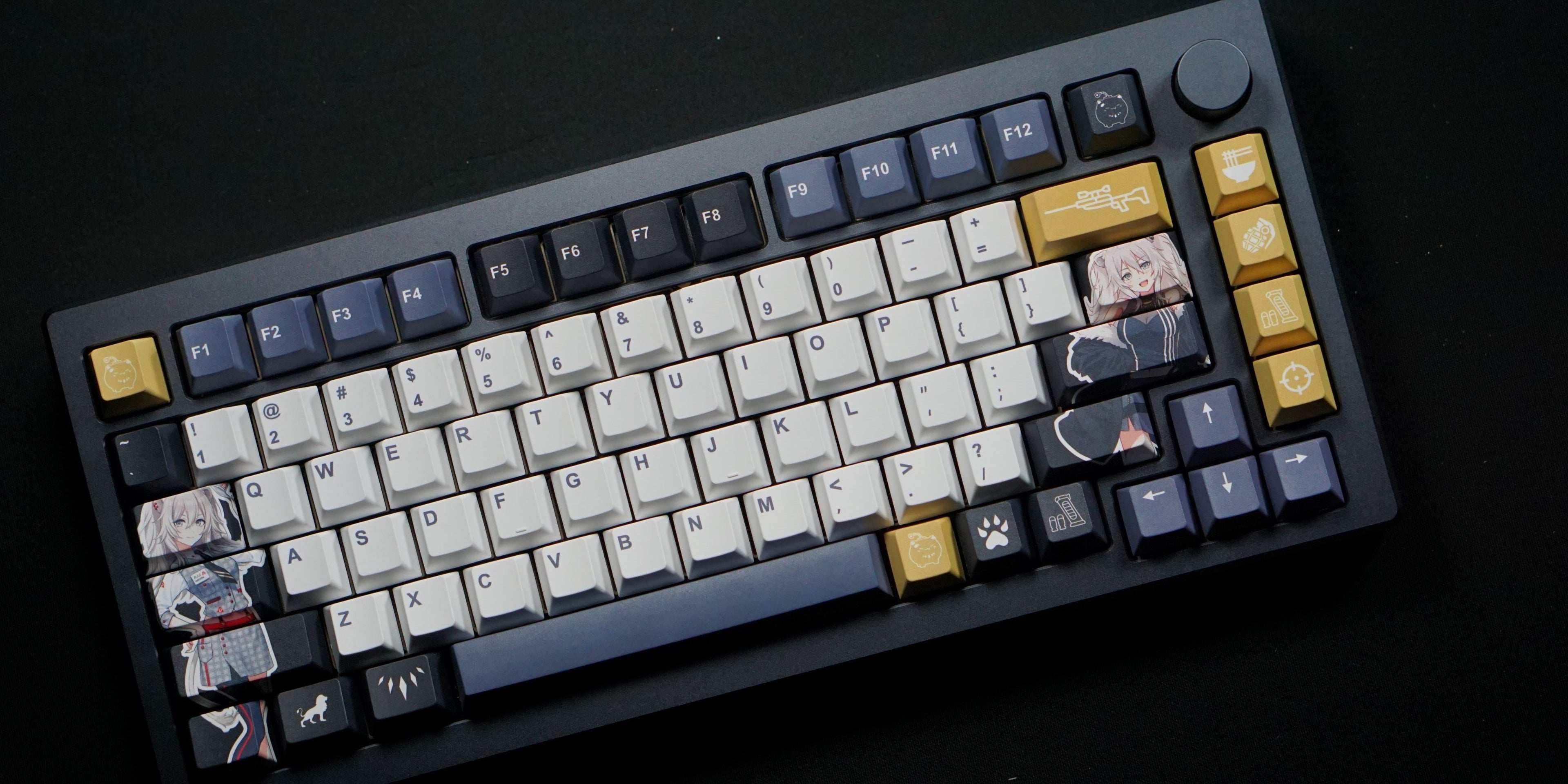Dye-sub Keycaps Feature
No Color Limit
The main difference between Dye sub keycaps and Doubleshot keycaps is that Dye sub keycaps are printed by blending base colors using a printer, so Dye sub keycaps are not limited in terms of colors. We can achieve a wide variety of colors simply by adjusting them on a computer.
As a result, Dye sub keycaps can display multiple different colors on the same keycap, while Doubleshot keycaps can only display two colors on the same keycap.
Customizable
The custom keyboard market places a strong emphasis on personalization, and this factor has led to a perfect combination of custom keyboards and Dye Sub keycaps.
Another feature of dye-sublimation keycaps is their customization. Dye Sub keycaps address the shortcomings of Doubleshot keycaps, which is the ability to achieve highly personalized designs on keycaps and create very fine and intricate patterns, including small text, icons, and details. This makes them an ideal choice for graphic and graphic design applications.
Users can choose their preferred patterns, images, colors, and fonts to create unique keycaps that cater to individual tastes and preferences, without being limited by the constraints of traditional Doubleshot keycaps.
Dye-sub Keycaps Limited
Color Deviation
To understand why Dye-sub keycaps may have color deviation, we first need to know the primary application of dye-sublimation technology.
Dye-sublimation technology is primarily used in the field of textile printing, such as T-shirts, skirts, as well as our company's main products like Deskmats and gifts. The majority of dye-sublimation technology, around 90%, is applied in the textile industry. This results in all dye-sublimation printers being large in size and capable of printing only on sublimation paper.
All the Dye-sub keycaps available in the market use convert printers. These businesses directly pour Dye-sub Ink into home printers to print on the film paper used for Dye-sub keycaps . This is the reason why the entry cost for Dye-sub keycaps is only around RM20,000 , and it's also why serious color deviations occur.
the issue of color deviation, manufacturers typically adopt one of three approaches:
- No treatment: Allowing color deviations to exist on the keycaps.
- Manual color correction during the design process: Designers select colors based on the actual colors printed by the printer to achieve the desired design color.
- Developing a color-accurate printer: This is the method we use. Fortunately, we have an excellent engineering team and extensive color calibration experience, which enables us to build our own color-accurate printer.
Keycaps with poor color management often exhibit the following issues:
- Yellowish Skin Tone: This is the most noticeable issue where skin colors appear unnaturally yellowish.
- Dull and Unsaturation Colors: Overall, the colors may appear less vibrant and lack brightness, making it challenging to achieve vivid and lively colors.
- Limited Color Gamut: Inadequate representation of a wide range of colors, potentially causing printed patterns to lose depth and complexity.
Our Solutions:
- We use a method inspired by the CMYK color separation of offset printing. By separating colors into CMYK (Cyan, Magenta, Yellow, and Black), we achieve color correction by printing one ink color at a time.
- We have developed our own industrial-grade dye-sublimation printer, combining both hardware and software to achieve Dye-sub Keycaps without color deviation and vibrant colors.
Spacebar Warped
PBT material spacebar keycaps in the market may encounter the issue of warping. This is caused by the cooling process during the material's production. To create perfect PBT spacebar keycaps, strict manufacturing processes and temperature control are required. Warping issues generally do not occur with ABS material keycaps.
Among all the manufacturing processes, spacebar warping is most severe in the case of dye-sublimation. This is because ABS material itself is prone to warping issues, and the dye-sublimation process involves additional heating. Therefore, warping of PBT spacebar keycaps in the dye-sublimation process is inevitable. As a manufacturer, we can only focus on quality control and eliminate keycaps with significant warping.
Solutions:
After the sublimation process is complete, while the keycap is still at a high temperature and in a pliable state, you can use a heavy object to press down on the spacebar key. Allow it to cool in this position. This procedure will make the keycap relatively straight, but some degree of bending may still persist.
Alignment Problem
Another unavoidable issue with Dye sub keycaps is alignment. Dye sub keycaps are produced by printing ink onto plastic film paper using a printer, and then heating the film paper to soften it before using vacuum forming to wrap the keycaps for the transfer process.
During the vacuum forming process, the film paper may deform and shift, leading to font alignment issues. Font alignment is a common occurrence in the manufacturing process, regardless of whether it's a major or minor brand. The only thing we can do is minimize alignment issues and eliminate keycaps with excessive alignment problems.
Solutions:
1.Continuously conducting tests and adjusting font size, position, and spacing to minimize tolerance issues.
2.Quality checks are performed on each individual keycap, and any substandard keycaps are removed to enhance product quality.
Spacebar Color Fading
The issue known as "Dye sub spacebar keycaps" is a common problem with Dye sub keycaps, where fading discoloration appears on the edges of the spacebar key.
This issue typically arises during the manufacturing of Dye sub keycaps when the film used in the process undergoes deformation due to vacuum suction, transitioning from a 2D flat state to a 3D dimensional state. This results in an increased surface area of the film, causing the ink color to become lighter. Consequently, the ability of the spacebar key's edges to absorb ink is reduced, giving the appearance of lighter coloration.
This issue is a potential challenge for all Dye sub keycaps, although it may be less noticeable in some colors after the sublimation process.





